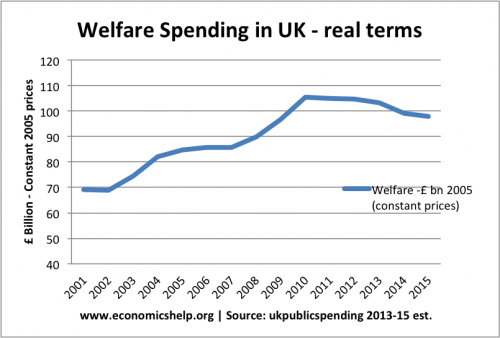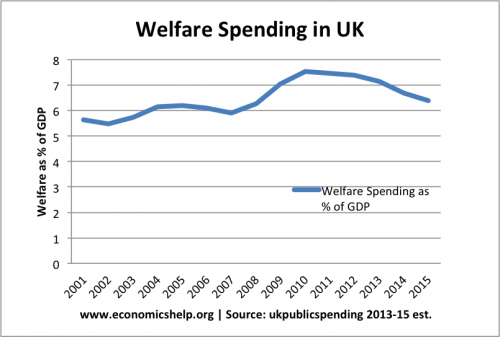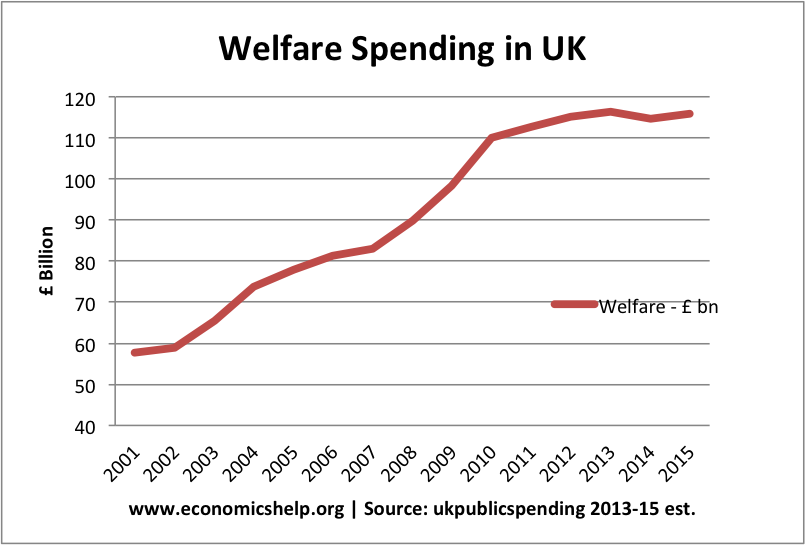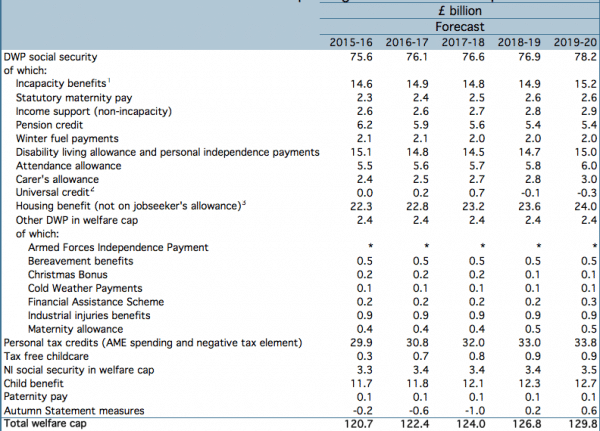Welfare spending in the UK is a controversial topic. There is significant political and public concern at the growth of welfare spending in the past few decades. In particular, there is a fear that the growth of the welfare state is encouraging a ‘dependency culture’. But, how much has welfare spending actually increased by? Are we really a nation of scroungers or is the extent of welfare payments exaggerated? One important point to bear in mind is that in a recession, we expect welfare spending to increase. That is really the whole point of the welfare state – to provide a minimum income during a period of temporary unemployment.
Welfare spending includes benefits the government pay to those out of work or on low incomes. It includes:
- Job seekers allowance – unemployment benefit
- Income support
- Housing benefit
- Child Benefit
- Winter fuel allowance (1)
Growth in Nominal Welfare Spending
Since 2001, welfare spending has increased from £57bn t0 £115bn. However, the government are planning to stabilise welfare spending at £115bn through limiting entitlement and the increase in the amount paid. The government may argue without firm action now, the trend would see continued unaffordable increases in welfare.
Welfare Payments in Real Terms

If we look at welfare payments in real terms (adjusted for inflation), we see the growth is less spectacular. Nevertheless, even adjusted for inflation, the welfare bill has increased by £34bn since 2001.
The figures for 2014 and 2015 are only estimates, and could be different.
Welfare Payments during Recession
It should be remembered the biggest growth of welfare payments occurred in the deep recession, when unemployment increased and real incomes fell. Between 2007 and 2010, the welfare bill increased £20bn in just three years. But, this is what should be expected. The welfare state aims to provided security during periods of high unemployment. This increase should be seen as cyclical. If unemployment falls, and real incomes increase post 2013, the welfare bill should be reduced.
This cyclical welfare spending is an automatica fiscal stabiliser. In a recession, incomes fall, welfare payments ensure people have a minimum income. This also helps to prevent a bigger fall in aggregate demand.
Welfare Payments as % of GDP

The most meaningful guide to the cost of the welfare state is to measure welfare payments as a % of GDP. If GDP is rising, we can afford to spend more on welfare payments, without increasing tax rates. Also between 2001 and 2012, the UK population increased by nearly 5 million. Therefore, the welfare payments per person increased slower than the total welfare bill.
This suggests welfare as a % of GDP has stayed reasonably stable at 6% of GDP. There was an increase during the recession – which is to be expected as GDP falls and welfare payments automatically increase.
The figures for 2014 and 2015 are estimates.
Welfare spending by DWP forecasts
Breakdown of welfare spending by OBR
Source: OBR – Economic and Fiscal Outlook, fiscal supplementary tables, Dec. 2014
Conclusion
Statistics such as this only show part of the story. To really understand the effectiveness of welfare payments, we need a close examination of each benefit, how it is spent and how it is claimed.
It illustrates the importance of being aware of different ways of viewing the same statistics. For example, the Daily Mail could easily run a headline (with a suitable picture of some immigrant living the good life)
“Welfare State is out of control as Welfare bill doubles in 10 years!”
Alternatively, you could say
Apart from expected blip during the recession, welfare payments as % of GDP remain at the same manageable level of 6%
The second headline probably wouldn’t sell as many newspapers. But, both statements are based on truth.
Related
Welfare at UK Public spending
(1) I think that winter fuel benefits is included in welfare, though I haven’t been able to verify.



2 thoughts on “The Growth of Welfare Spending in the UK”
Comments are closed.